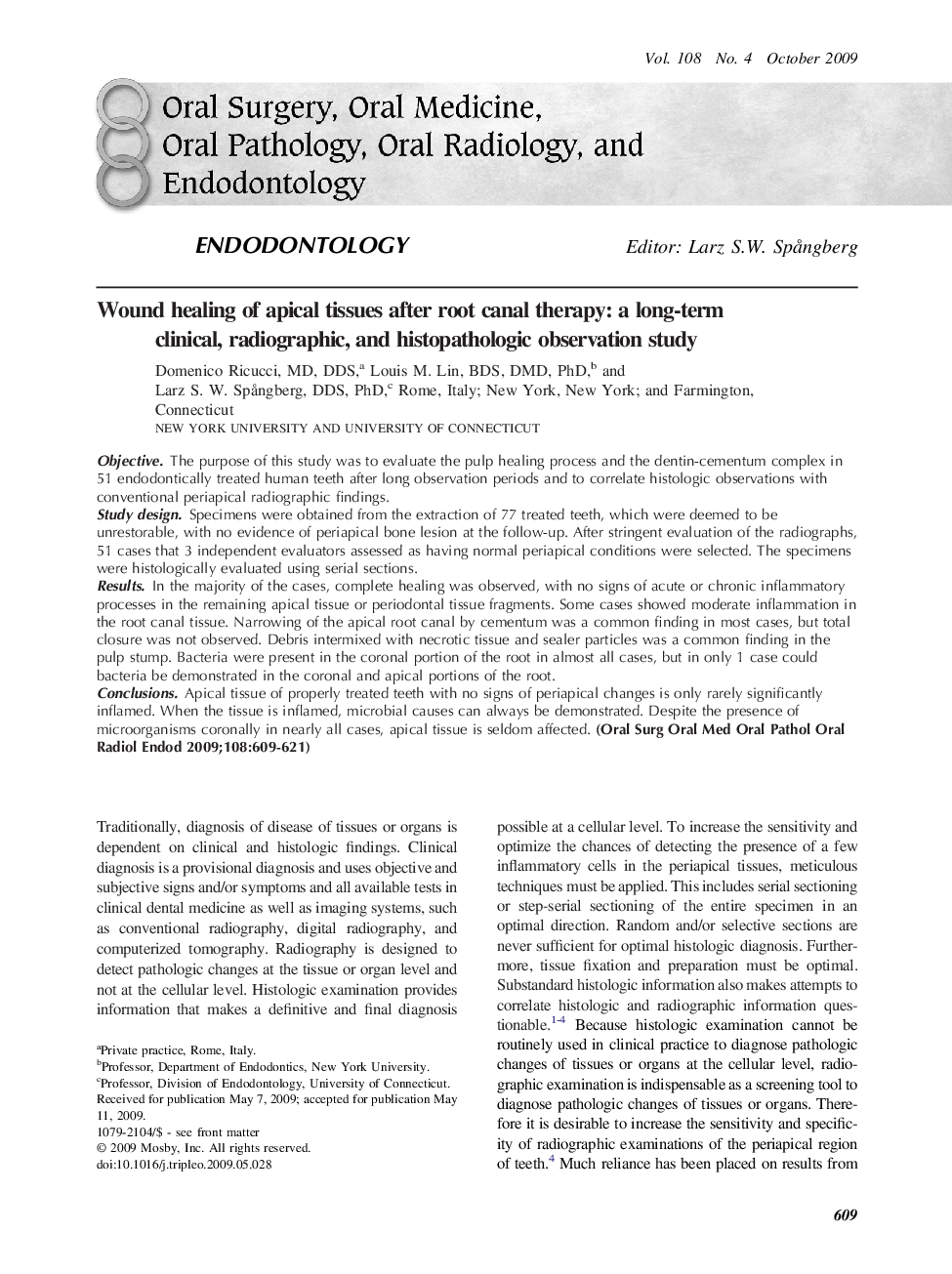| Article ID | Journal | Published Year | Pages | File Type |
|---|---|---|---|---|
| 3167938 | Oral Surgery, Oral Medicine, Oral Pathology, Oral Radiology, and Endodontology | 2009 | 13 Pages |
ObjectiveThe purpose of this study was to evaluate the pulp healing process and the dentin-cementum complex in 51 endodontically treated human teeth after long observation periods and to correlate histologic observations with conventional periapical radiographic findings.Study designSpecimens were obtained from the extraction of 77 treated teeth, which were deemed to be unrestorable, with no evidence of periapical bone lesion at the follow-up. After stringent evaluation of the radiographs, 51 cases that 3 independent evaluators assessed as having normal periapical conditions were selected. The specimens were histologically evaluated using serial sections.ResultsIn the majority of the cases, complete healing was observed, with no signs of acute or chronic inflammatory processes in the remaining apical tissue or periodontal tissue fragments. Some cases showed moderate inflammation in the root canal tissue. Narrowing of the apical root canal by cementum was a common finding in most cases, but total closure was not observed. Debris intermixed with necrotic tissue and sealer particles was a common finding in the pulp stump. Bacteria were present in the coronal portion of the root in almost all cases, but in only 1 case could bacteria be demonstrated in the coronal and apical portions of the root.ConclusionsApical tissue of properly treated teeth with no signs of periapical changes is only rarely significantly inflamed. When the tissue is inflamed, microbial causes can always be demonstrated. Despite the presence of microorganisms coronally in nearly all cases, apical tissue is seldom affected.
